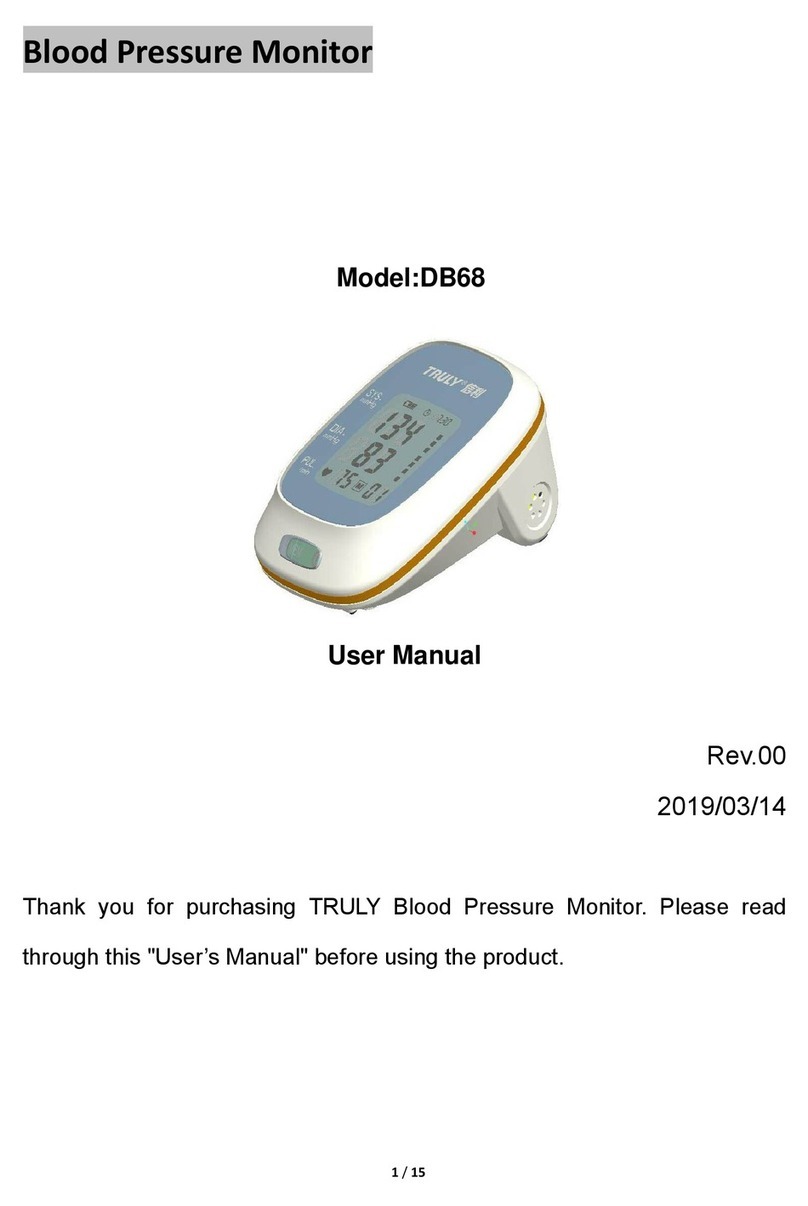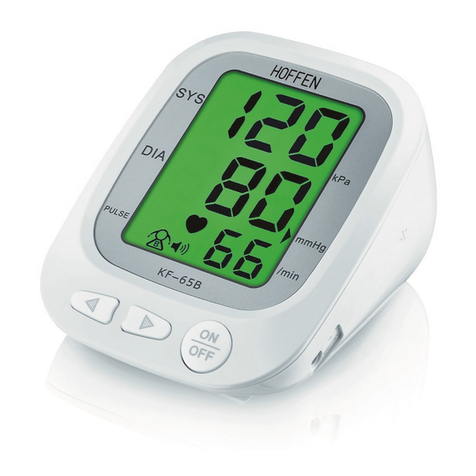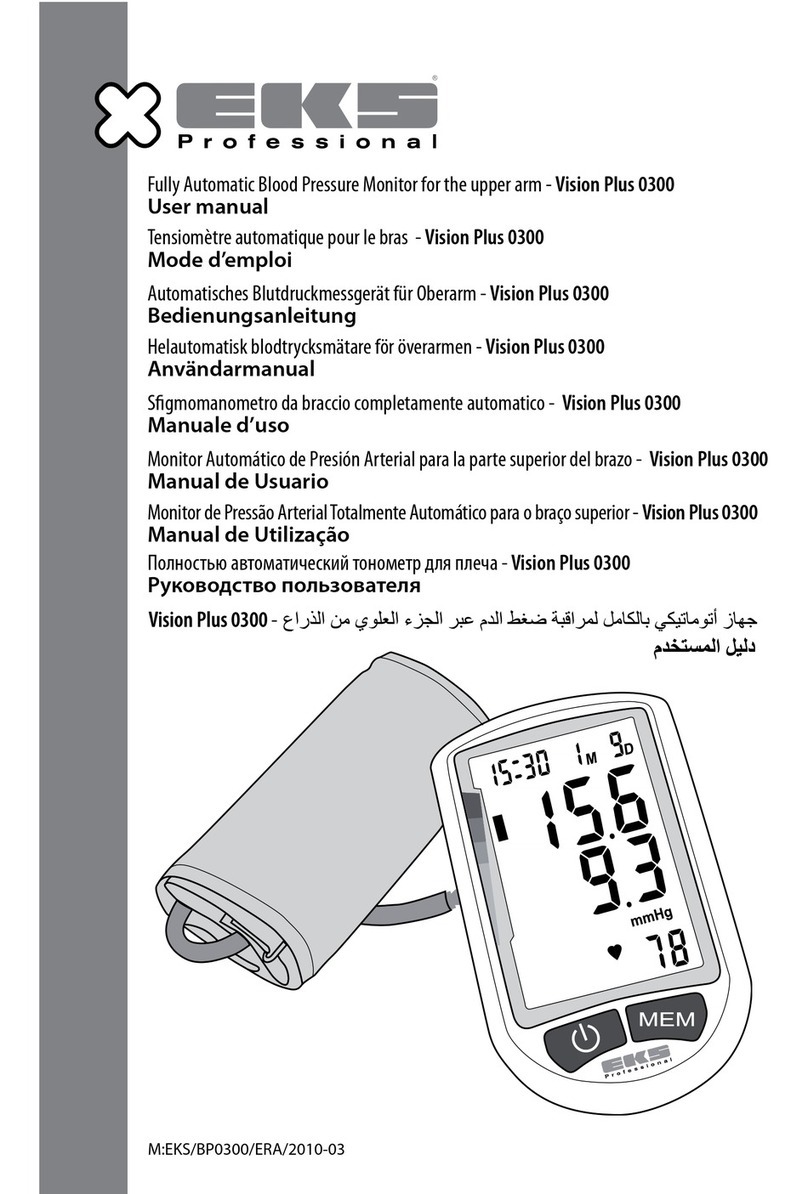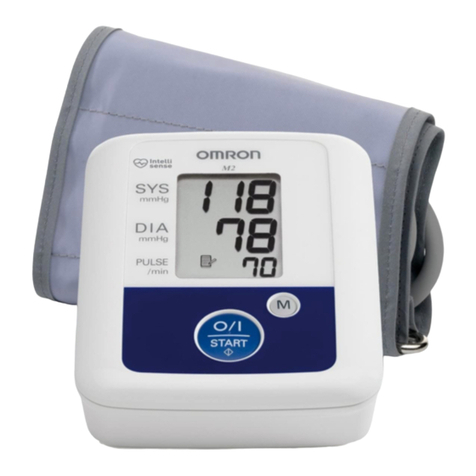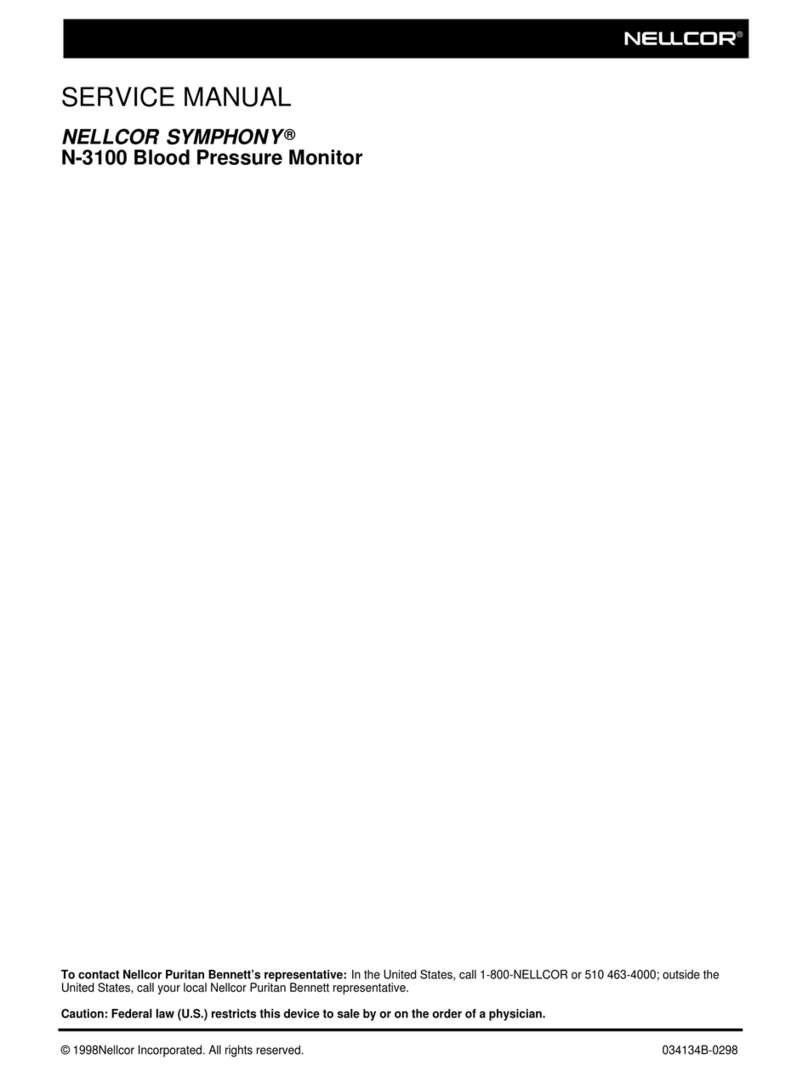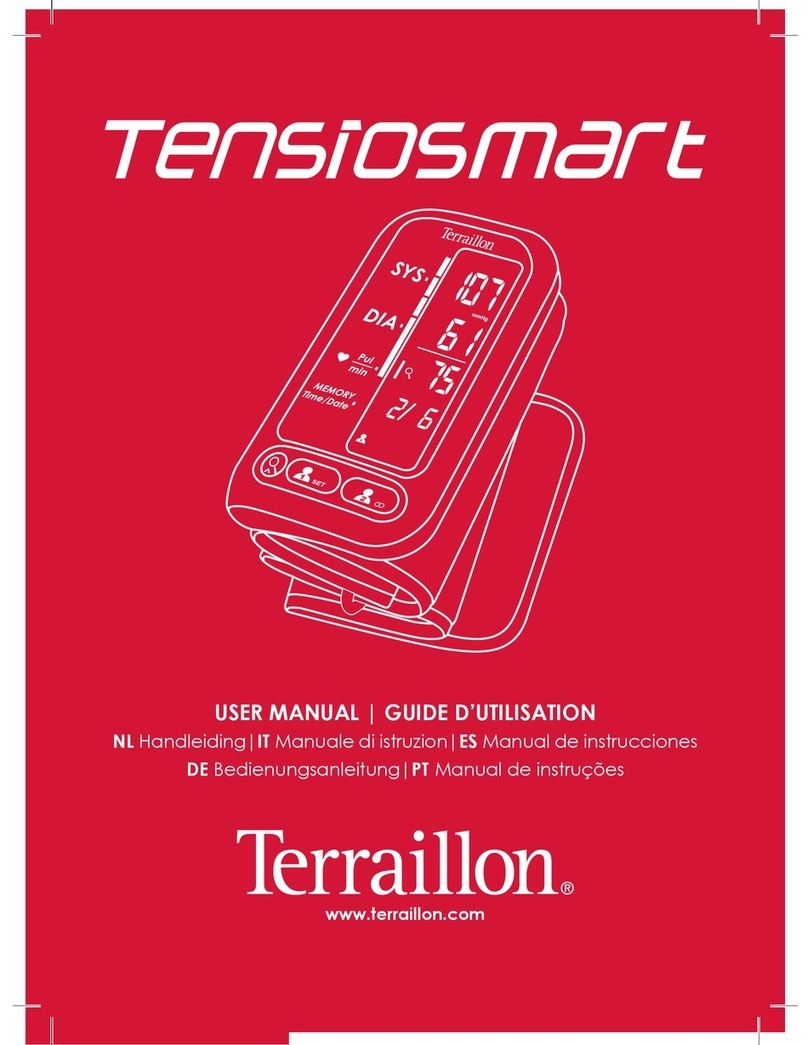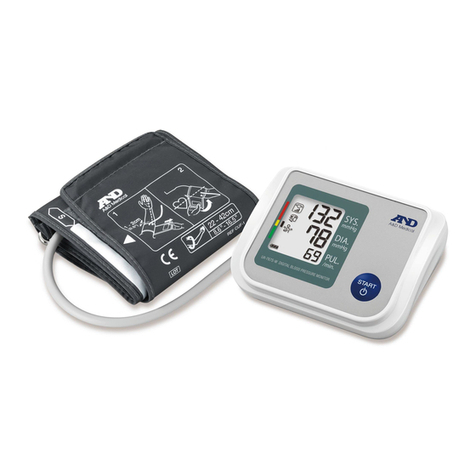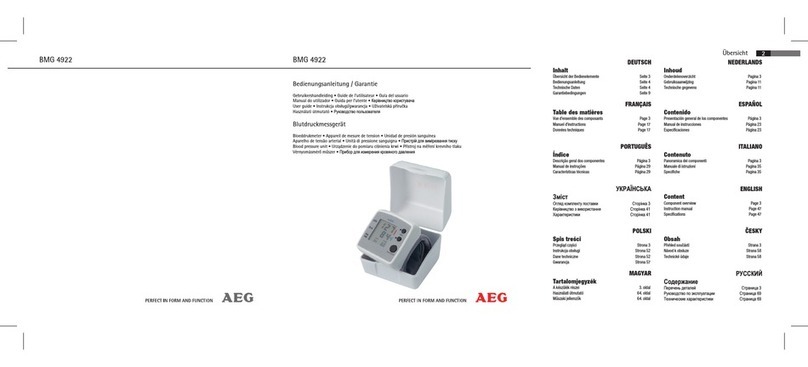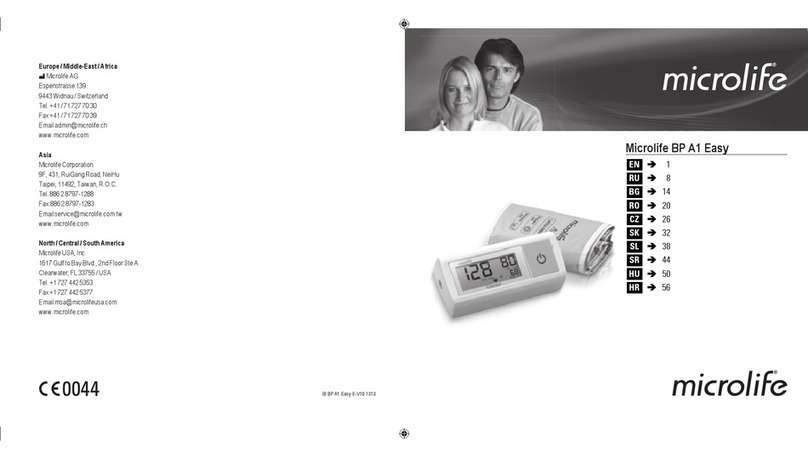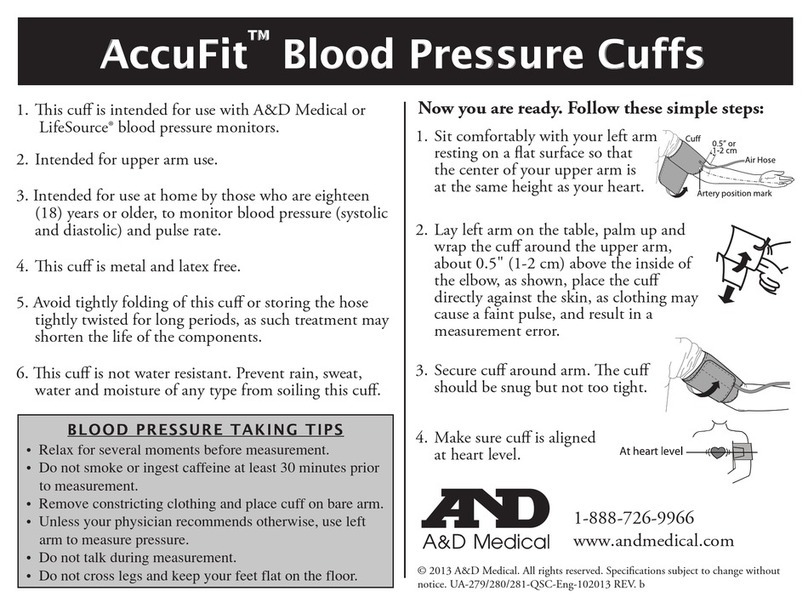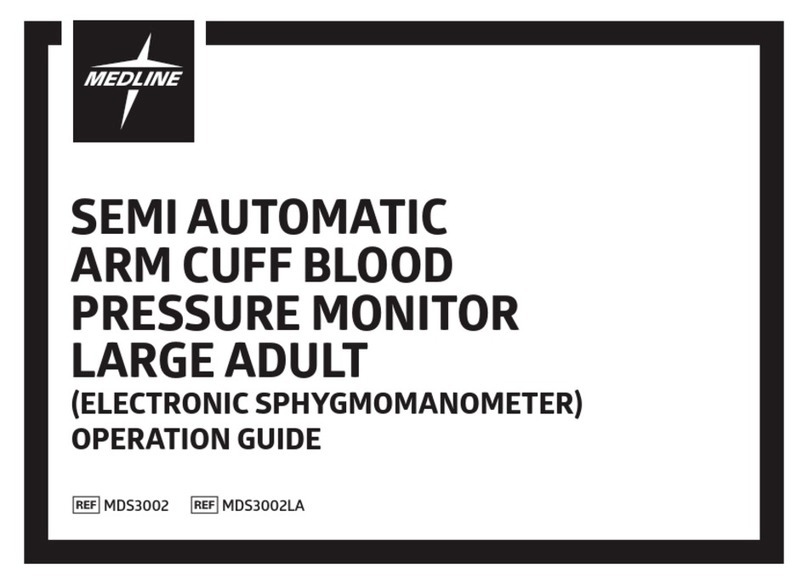Health Life HL858DM User manual

2VER: A001 202101
Table of Contents
Medical Disclaim er……………………………………………………………………………03
Intended Use………………………………………………………………………………..…03
About Blood Pressure………………………………………………………………………04
Measurem ent Met hod……………………………………………………………………06
Accuracy……………….…………………………………………………………………07
Precaut ions………………………………………………………………………….08
Device Overview……………………………………………………………………………….11
Sym bol Definitions………………………………………………………………………….13
Feat u r es……………………………………………………………………………………………14
I nst alling Batteries………………………………………………………………………….17
Using the AC/ DC Adapter……………………………………………………………1 8
Applying the Cuff…………………………………………………………………………….19
Measurem ent Procedure………….…………………………………………………….20
Mem ory Funct ion…………………………………………………………………………….23
St orage and Maint enance……………………………………………………………….24
Bluetooth Com m unicat ion……………………………………………………………….25
Troubleshooting……………………………………………………………………………….27
Lim it ed Warranty…………………………………………………………………………….28
Specificat ions………………………………………………………………………………….29
Note………………………………………………………………………………………….…….30
Appendix…………………………………………………………………………………….…….32
Blood Pressure Diary……………….……………………………………………….…….35

3VER: A001 202101
Medical Disclaimer
This m anual and pr oduct ar e not m eant as a subst it ut e for advice
provided by your doctor.
You are not to use the inform at ion cont ained herein, or this product
for diagnosing or t reat ing a healt h pr oblem or pr escr ibing any
m edicat ion. I f you have or suspect t hat you have a m edical problem ,
prom pt ly consult your healthcare provider.
Intended Use
This device uses t he oscillom etric m et hod t o aut om at ically m easure
systolic and diastolic blood pressure as well as heart rate.The
m easurem ent posit ion is at hum an being’s arm .
All values can be read out in t he LCD panel. Measur em ent posit ion is
at hum an being’s upper arm . The int ended user of this
over-the-count er device is adults aged 18 years and older with arm
circum ference ranging from 9 inches t o 17 inches ( approx.23 cm to
43 cm ) for hom e use.
HL858DM features BP Cat egory I ndicat or that will show t he
inform ation with the readings on the screen for the user t racking their
blood pressure level.
HL858DM is equipped wit h an Advanced I HB detect ion feature to
collect and analyze pulses. I f the specific irregular heart beats are
det ected and it m ay affect blood pressur e reading with deviat ion, t he
device will give the user a warning signal. The feat ure can inform t he
user that t he m easured blood pressure reading m ay be inaccurat e
once t he specific irregular heartbeats are detect ed.
Besides, t he device feat ures a built -in "Bluet ooth Transm ission"
funct ion, w hich enables t he device aut om atically transm it m easuring
result s t o paired Bluetoot h-enabled device. Also, users could sim ply
synchronize t he cur rent date and t im e, and check the bat t ery st atus
of blood pressur e m onitor by m eans of DailyChek®applicat ion soft ware
with the paired Bluet ooth-enabled device.

4VER: A001 202101
About Blood Pressure
A. What is blood pressure?
Blood pressure is t he m easurem ent of the force of blood pushing
against t he walls of t he arteries. Ar t erial blood pressure is
const ant ly fluctuat ing during the course of t he cardiac cycle. The
highest pressure in t he cycle is called t he syst olic blood pressure,
and represent s t he pr essur e in t he ar ter y when t he hear t is beat ing.
The lowest pressure is t he diast olic blood pressure, and represent s
the pressure in t he artery when the heart is at rest . Bot h t he
syst olic and the diastolic pressure are necessary for a physician to
evaluat e t he st at us of a patient's blood pressure.
Many fact ors such as physical activity, anxiet y or the t im e of day,
can influence your blood pressure. Blood pressure is typically low
in t he m ornings and increases from t he aft ernoon t o the evening.
I t is on average low er in the sum m er and higher in t he wint er.
B. Why is it useful t o m easure blood pressure
at hom e?
Having one's blood pressure m easured by a doct or in a hospital or
a clinic, is oft en associat ed wit h a phenom enon called “ Whit e Coat
Hypert ension” where t he pat ient becom es nervous or anxious,
thus raising his blood pressure. There are also num erous ot her
fact ors t hat m ight cause your blood pressure to be raised at a
specific t im e of day. This is why m edical pract itioners recom m end
hom e m onit oring as it is im por tant t o get readings of blood
pressure during different tim es of t he day t o really get an idea of
your real blood pressure.
Medical pract it ioner s generally r ecom m end t he “ Rule of 3”, w here
you are encouraged t o take your blood pressure three tim es in a
row ( at 3 ~ 5 m inut e int erval) , t hree tim es a day for three days.
Aft er t hree days you can average all the result s and t his will give
you an accurate idea of what your blood pressure really is.

5VER: A001 202101
About Blood Pressure
A. W H O b lood p r essure cla ssif ica t ion s:
St andards for assessm ent
of high or low blood pressure
wit hout regard to age, have
been est ablished by t he World
Health Or ganizat ion ( WHO) ,
as shown in the chart.
However this chart is not
exact for classificat ion of blood pr essure and it 's int ended t o be
used as a guide in understanding non-invasive blood pressure
m easurem ent s. Please consult with your physician for proper
diagnosis.
B. Va r ia t ions in blood p re ssur e:
I ndividual blood pressures vary greatly bot h on a daily and a
seasonal basis. These var iat ions ar e even m ore pronounced in
hyper t ense pat ient s. Norm ally the blood pressure rises while at
work and is at its lowest during sleeping period.
( hype r t en se : m e ans a p er son w h o h as high blood
pr essure sym pt om .)
The graph below illust rat ed the variations in blood pressure
over a whole day wit h m easurem ent t aken every five minut es.
The thick line
represent s sleep.
The rise in blood
pr essur e at 4 PM ( A
in the graph) and
12 PM ( B in the
graph) correspond
t o an at t ack of
pain.
(Direct ar t er ial pressure r ecording in unrest ricted m an.
Beven, Honour & Stott : Clin. Sci. 36: 329. 1969)
Table of contents

